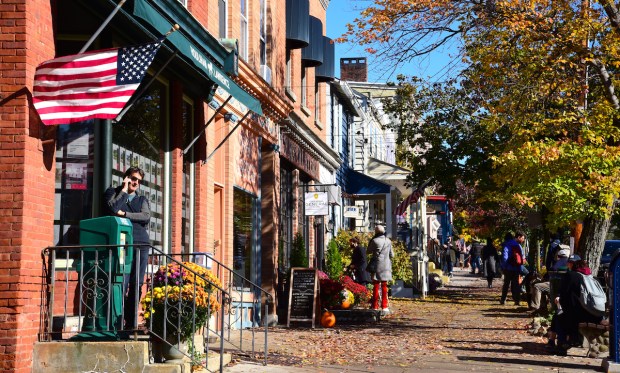Main Street Business Formation Hits Headwinds as Service Sector Startups Decline

If startups are the lifeblood of Main Street businesses, and if optimism is what drives sole proprietors and small firms to make a go of it in the local community, might it be the case that the optimism is waning a bit?
The latest data released last week by the U.S. Census Bureau showed that projected business formations for October were down 4% versus September. That comes as business applications, overall, were unchanged. Overall, the projections estimated that 28,679 new business startups with payroll tax liabilities will form within four quarters of application.
Where the Pullbacks Are
Retail trade applications were up 3.5%. Among the industries seeing application declines were accommodation and food services establishments, down 6.2%; construction firms applications, down 3.9%; and professional services firms, down 3.2%.
PYMNTS Intelligence found earlier this year that the construction and hospitality sectors have been among the segments facing financial pressure. Half of construction firms said they have access to less than 30 days’ worth of cash. As many as 45% of hospitality firms said they had a similar paucity of cash on hand.
The data came in the wake of other statistics last month that almost 1,500 small businesses filed for bankruptcy under Subchapter V in the first nine months of 2023. That’s nearly as many filings during the entirety of last year. Delinquency rates and defaults of small business loans have been on the rise.
The need for capital continues to be strong, even urgent. PYMNTS Intelligence found in October that small- to medium-sized businesses (SMBs) have had trouble tapping sources of credit. Fifty-three percent of SMBs have “no current access to credit.” The percentage is even more starkly seen among the smallest companies surveyed, with $150,000 or less in annual revenue, where the lack of access tops 64%.
Only about a third of the more than 500 SMB owners surveyed said they had access to both business and personal funds. Personal credit cards are a source of funding used by 31% of small business owners in the event of an emergency.
There may be a bit of relief in sight for at least some SMBs, but only time will tell if a White House plan announced Tuesday (Nov. 21) to allocate $50 million to underserved businesses will prove effective.
With financial pressures in place, and with a pullback in new business activity seen across segments, notably construction and hospitality, it seems increasingly likely that the number of darkened storefronts on Main Street will increase, and they may not be filled anytime soon.

